In the vast world of ornithology, where dedicated researchers spend decades documenting avian species in their natural habitats, one bird remains particularly enigmatic—the Satyr Tragopan. Despite modern technological advances in wildlife photography and extensive scientific expeditions, this elusive pheasant continues to frustrate researchers attempting to capture comprehensive photographic documentation of its natural behaviors. The challenge isn’t merely finding this secretive bird but photographing it engaged in its most significant behaviors, particularly its elaborate courtship display, in the wild. This article explores the fascinating story of the Satyr Tragopan, why it remains so difficult to photograph, and the ongoing efforts to document this magnificent but camera-shy species.
The Mysterious Satyr Tragopan: Nature’s Phantom
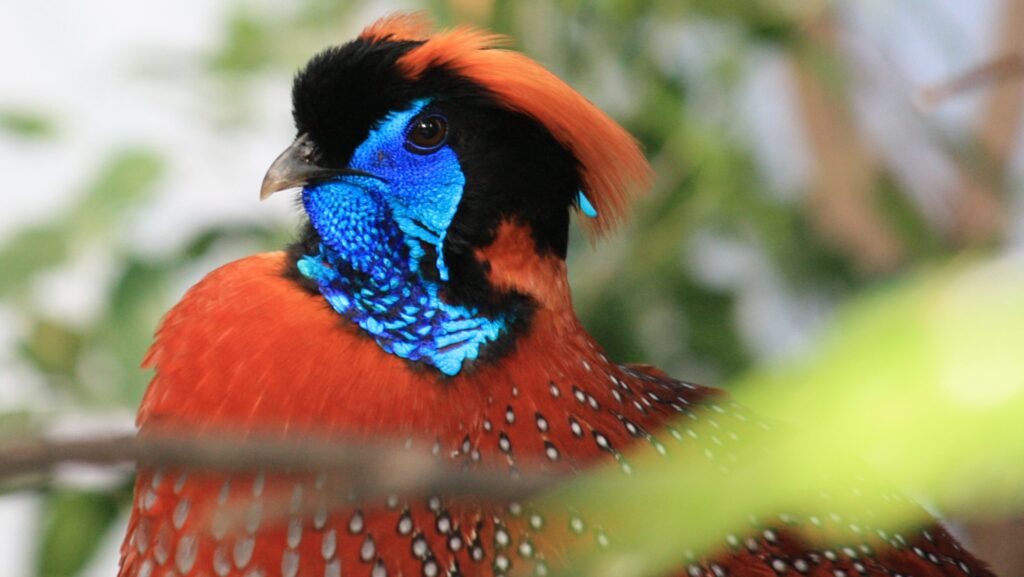
The Satyr Tragopan (Tragopan satyra), also known as the Crimson Horned Pheasant, inhabits the dense undergrowth of Himalayan forests across Nepal, northeast India, Bhutan, and parts of Tibet. With its vibrant crimson plumage decorated with white spots, the male presents one of the most spectacular sights in the avian world. However, this beauty comes with extraordinary shyness, as the bird has evolved to remain nearly invisible within its forest habitat. Scientists estimate that for every hundred hours spent in their habitat, researchers might glimpse these birds for mere seconds, making systematic photography nearly impossible. The challenge is magnified by their preference for dense vegetation and steep, often inaccessible terrain that frustrates even the most determined wildlife photographers.
Why Photographing the Satyr Tragopan Matters
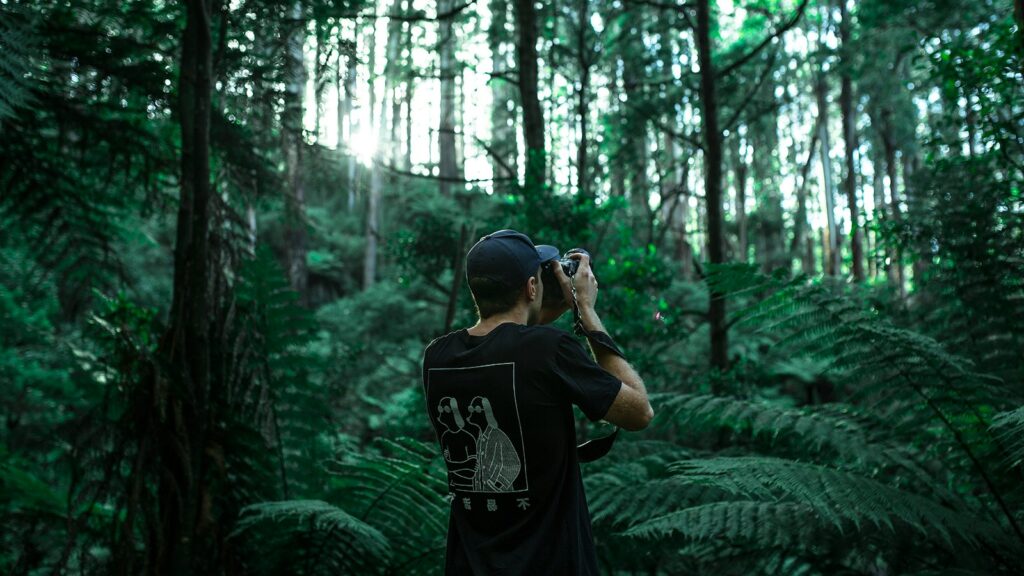
Documentation of the Satyr Tragopan’s full behavioral repertoire isn’t merely for aesthetic purposes but serves critical scientific and conservation goals. The species faces growing threats from habitat loss and fragmentation across its Himalayan range, placing it in the “Near Threatened” category on the IUCN Red List. Comprehensive photographic documentation would provide baseline visual data about natural behaviors, helping scientists monitor changes in response to environmental pressures. Additionally, detailed images of courtship displays would enhance understanding of sexual selection patterns in pheasants, potentially revealing evolutionary adaptations unique to this species. Perhaps most importantly, compelling photographs would raise public awareness about this declining species, potentially catalyzing conservation efforts before further population declines occur.
The Extraordinary Courtship Display Scientists Can’t Capture
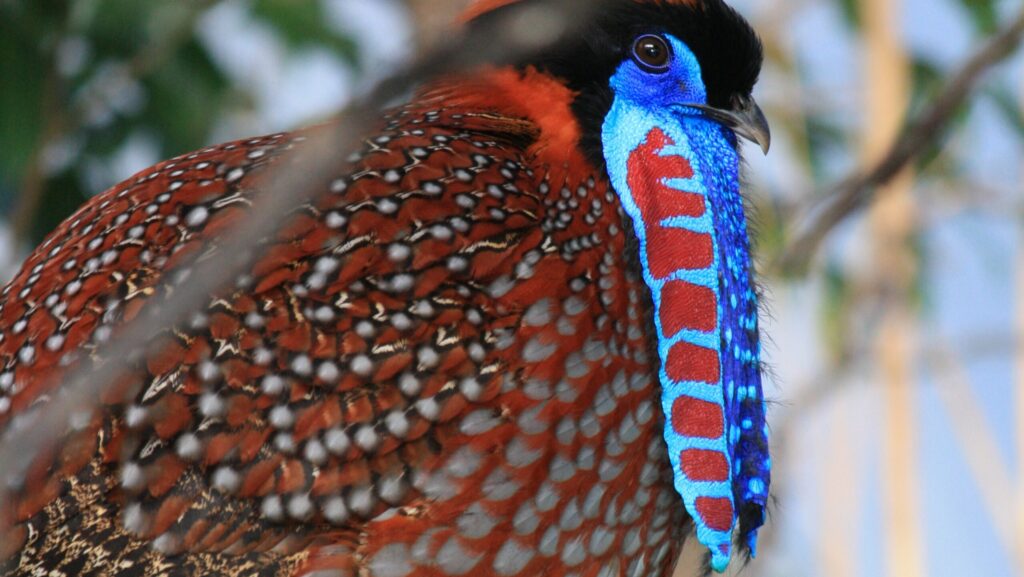
The holy grail for researchers studying the Satyr Tragopan is documenting its full courtship display in the wild—a spectacle so elaborate it rivals the most theatrical performances in nature. During this display, the male inflates a colorful bib-like structure from his throat that resembles a brightly colored balloon patterned with blue and red. Simultaneously, he extends two blue “horns” from above his eyes, transforming his appearance entirely. This display lasts mere minutes and occurs only in specific seasonal conditions, typically at dawn in remote mountain forests. Despite numerous attempts by world-class wildlife photographers and documentary teams, including those from BBC’s Natural History Unit, no one has yet captured a comprehensive sequence of this full display in the wild. The few existing images come primarily from captive birds, which may display differently than their wild counterparts.
The Geographical Challenge: Hostile Terrain and Remote Habitats

The Satyr Tragopan’s preference for some of the world’s most challenging landscapes creates significant hurdles for photography attempts. These birds typically inhabit elevations between 2,400 and 4,200 meters in the eastern Himalayas, regions characterized by steep slopes, dense rhododendron forests, and difficult weather conditions. During the spring breeding season, when the birds are most active, these areas often experience heavy rainfall and fog, further reducing visibility and complicating camera work. Many of the Tragopan’s preferred habitats lie in protected areas with limited access or require special permits that can take months to secure. Even when researchers reach these areas, they must contend with terrain that makes setting up blinds or camera traps extraordinarily difficult, leaving much of the species’ range effectively “unphotographable” using conventional methods.
The Behavioral Barriers: Exceptional Wariness
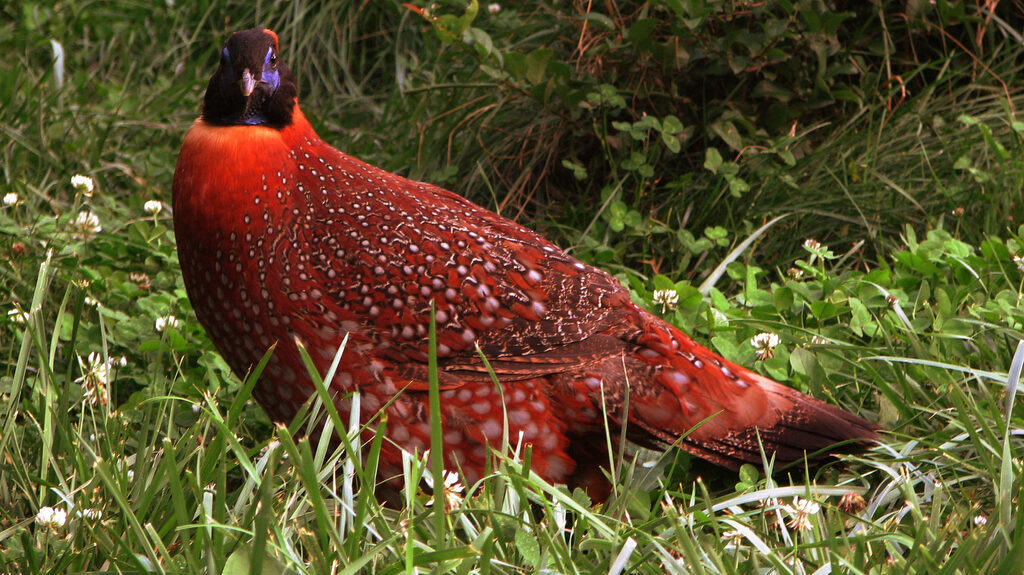
Beyond geographic challenges, the Satyr Tragopan’s behavioral adaptations make it particularly difficult to photograph. These birds possess exceptional hearing and can detect the slightest unfamiliar sounds, such as a camera shutter or a photographer’s movement, from remarkable distances. They typically respond to potential threats by freezing motionless or silently retreating into dense vegetation rather than flushing into the open. Even more challenging is their ability to detect and avoid camera traps, with studies showing they alter their movements when sensing human presence in an area, sometimes avoiding locations for weeks after human visitation. Research indicates they can detect human scent on equipment left in the forest, making remote camera trapping less effective than with many other elusive species. This combination of sensory acuity and extreme caution creates a bird that seems almost supernaturally aware of photographic attempts.
Technology That’s Failed: When Modern Tools Meet Ancient Adaptations

Despite employing cutting-edge wildlife photography technology, researchers have consistently failed to obtain comprehensive documentation of the Satyr Tragopan. Advanced camera traps equipped with silent triggers, infrared sensors, and camouflaged housings have been deployed throughout their range with minimal success. In a 2018 expedition using 24 state-of-the-art camera traps over six months, researchers captured only three partial images of male Tragopans, none showing courtship behavior. Drone technology, successful with many other elusive species, proves ineffective due to the dense canopy that shields the birds from aerial observation. Even thermal imaging cameras, which detect heat signatures through vegetation, have proven largely unsuccessful as the birds’ body temperature appears to regulate closely with their environment. The consistent failure of modern technology against this single species has earned the Satyr Tragopan a reputation as the “photographer’s nemesis” among wildlife documentarians.
The Captive Conundrum: Why Zoo Photos Don’t Count
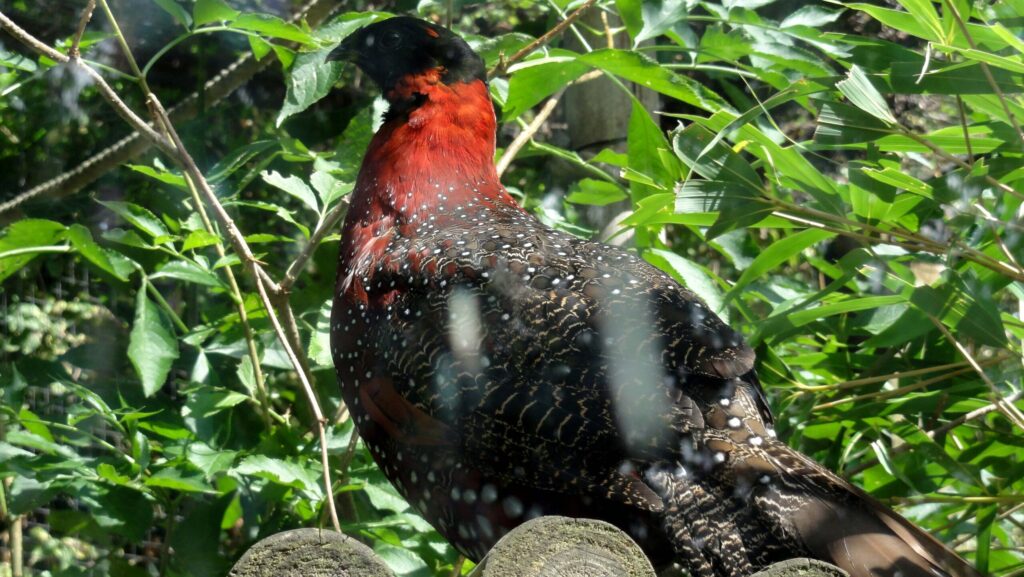
While the Satyr Tragopan is successfully bred in captivity at several zoological institutions worldwide, images from these controlled environments don’t satisfy scientific documentation requirements for several critical reasons. Captive birds often display behavioral differences from their wild counterparts, particularly regarding courtship displays that may be abbreviated or altered when performed without the complete ecological context. The timing, intensity, and complete sequence of courtship behaviors observed in captivity may not accurately represent what occurs in the birds’ natural habitat. Additionally, scientific documentation requires capturing behaviors in the species’ evolutionary context, including interactions with natural vegetation, predator avoidance, and responses to wild environmental conditions. From a conservation perspective, understanding how these birds utilize specific microhabitats in the wild is crucial information that captive photography simply cannot provide, creating an ongoing need for wild documentation despite the challenges.
Close Calls and Near Misses: The Photographer’s Tales
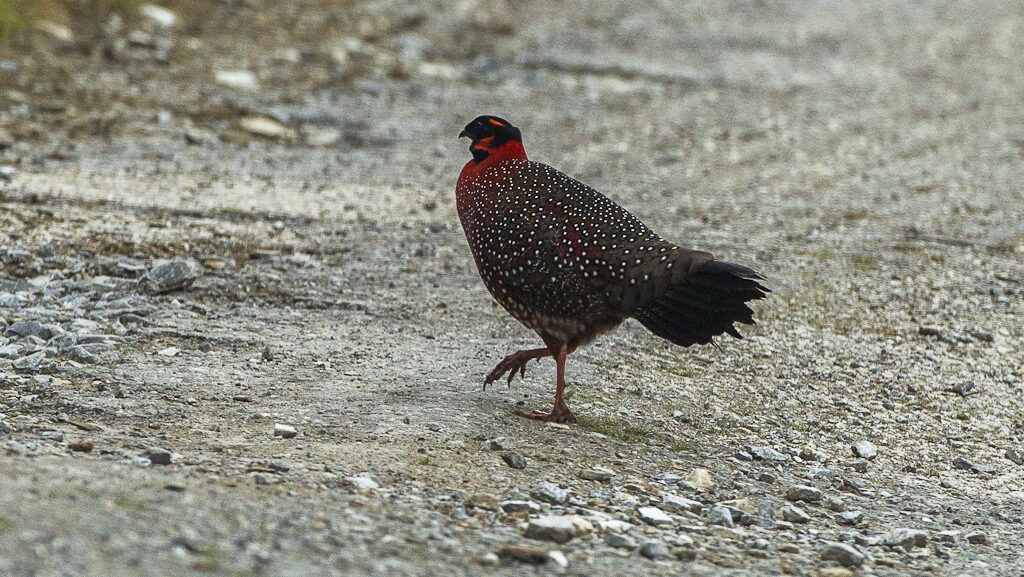
The history of attempts to photograph the Satyr Tragopan is filled with tantalizing near-misses and tales of extraordinary patience. Wildlife photographer Dhritiman Mukherjee spent 89 days across three years in Sikkim’s high-altitude forests, managing only a single blurred image of a male Tragopan retreating into vegetation. British naturalist Ben MacDuie recounts spending two weeks in a carefully constructed blind in Nepal, finally witnessing a full display at dawn only to discover that unexpected condensation had fogged his camera lens, rendering the once-in-a-lifetime opportunity uncaptured. Perhaps most heartbreaking was the 2015 expedition by a National Geographic team that successfully recorded thirty seconds of display behavior before an unexpected encounter with a yellow-throated marten scared the bird away and damaged their primary camera equipment. These stories form part of wildlife photography folklore and demonstrate why this species has developed such a mythical status among nature photographers.
Indigenous Knowledge: What Local Communities Know
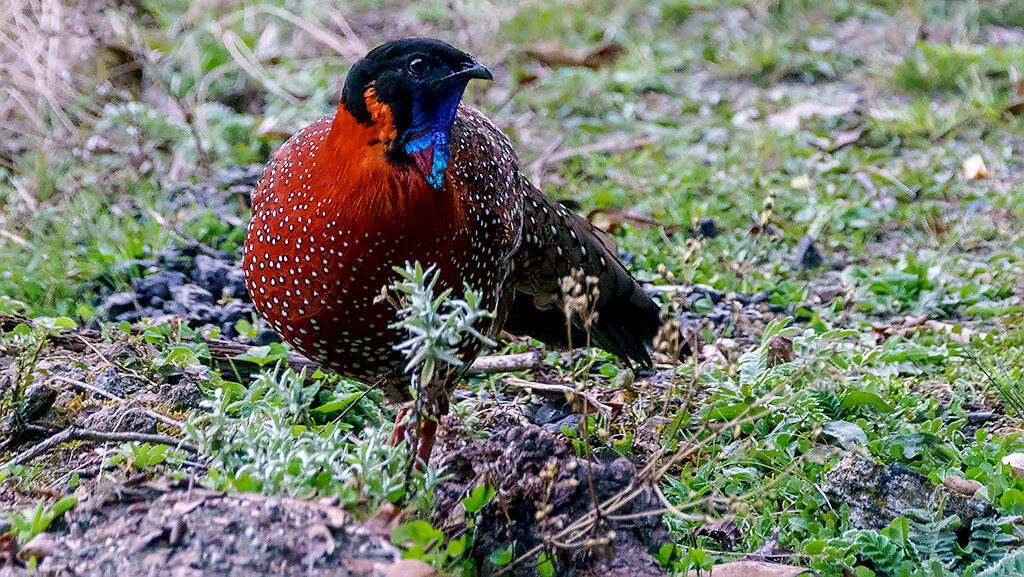
While scientific photography attempts have largely failed, indigenous communities living within the Tragopan’s range possess generations of knowledge about these secretive birds. The Lepcha people of Sikkim refer to the Satyr Tragopan as “Monal,” considering it spiritually significant and avoiding hunting it despite traditional hunting practices for other pheasant species. In Nepal, Sherpa guides have identified specific trees where males predictably perform displays, information that remains largely untapped by researchers due to communication barriers and scientific skepticism of traditional knowledge. Some indigenous communities report behavioral patterns not yet documented scientifically, including observations that the birds can predict weather changes and alter their calling patterns accordingly. Increasingly, scientific expeditions are partnering with indigenous guides, combining traditional ecological knowledge with modern camera technology in hopes of finally capturing the elusive images.
The Conservation Implications of Photographic Gaps
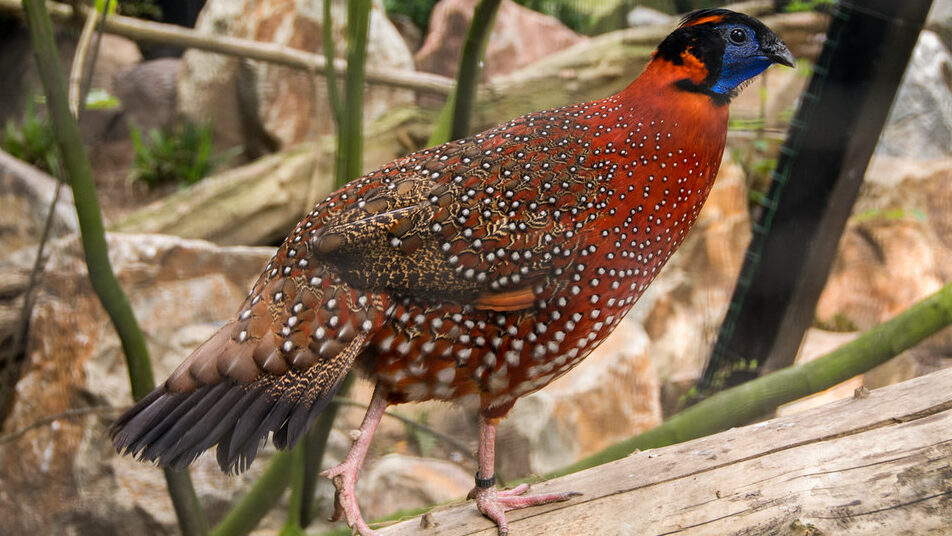
The inability to fully document the Satyr Tragopan photographically has significant conservation implications that extend beyond scientific curiosity. Without compelling images demonstrating their remarkable appearances and behaviors, these birds receive less public attention and conservation funding than more photogenic threatened species. Conservation initiatives often rely on flagship species with strong visual appeal to drive habitat protection efforts, placing camera-shy species at a disadvantage regardless of their ecological importance. Additionally, without comprehensive visual documentation, researchers struggle to monitor population health indicators such as plumage quality, which can signal environmental stressors before population declines become apparent. This photographic void also complicates anti-poaching efforts, as law enforcement officials may lack reference materials to identify illegally captured specimens or body parts appearing in wildlife trade.
Scientific Adaptations: New Approaches to an Old Challenge
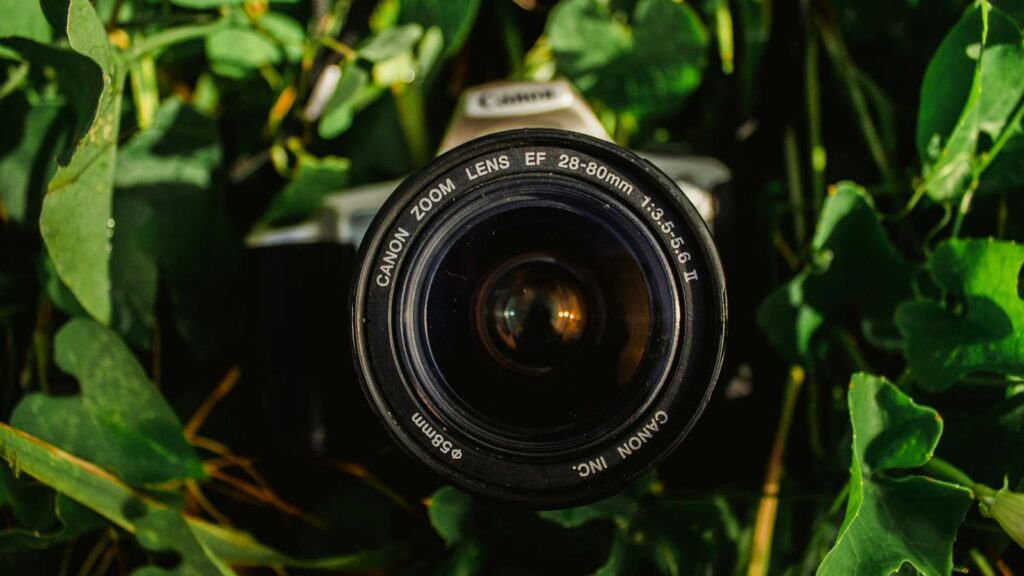
Faced with continued photographic failures, scientists are developing innovative approaches specifically tailored to the Satyr Tragopan’s unique challenges. A promising development involves autonomous camera systems that can be installed months before breeding season, allowing human scent to dissipate and forest conditions to normalize before activation. Researchers at the Wildlife Institute of India are experimenting with camera disguises that mimic native vegetation, incorporating materials from the actual habitat to reduce the birds’ wariness of equipment. Sound-triggered cameras activated by the specific frequency of male Tragopan calls show particular promise, as they remain dormant until courtship vocalizations begin. Perhaps most innovative is the development of “smart blind” technology that uses artificial intelligence to recognize the beginning of display behavior and automatically adjust camera settings for optimal capture in changing light conditions—technology developed specifically in response to previous failures with this single species.
The Global Hunt: International Collaboration

The challenge of photographing the Satyr Tragopan has evolved into an international collaborative effort involving researchers, photographers, and conservation organizations across multiple countries. The Himalayan Pheasant Project, launched in 2019, coordinates photographers across Nepal, India, and Bhutan, sharing location data and behavioral observations through a centralized database to increase documentation chances. Major wildlife photography organizations including the Natural History Museum’s Wildlife Photographer of the Year competition have established special recognition categories for significant Tragopan documentation, incentivizing continued attempts. Technology companies have joined the effort, with Sony developing specialized low-light camera equipment specifically tested on captive Tragopans before deployment in field conditions. This unprecedented level of international collaboration for documenting a single species reflects both the extraordinary challenge and the scientific importance of succeeding in this photographic quest.
Beyond Photography: Alternative Documentation Methods
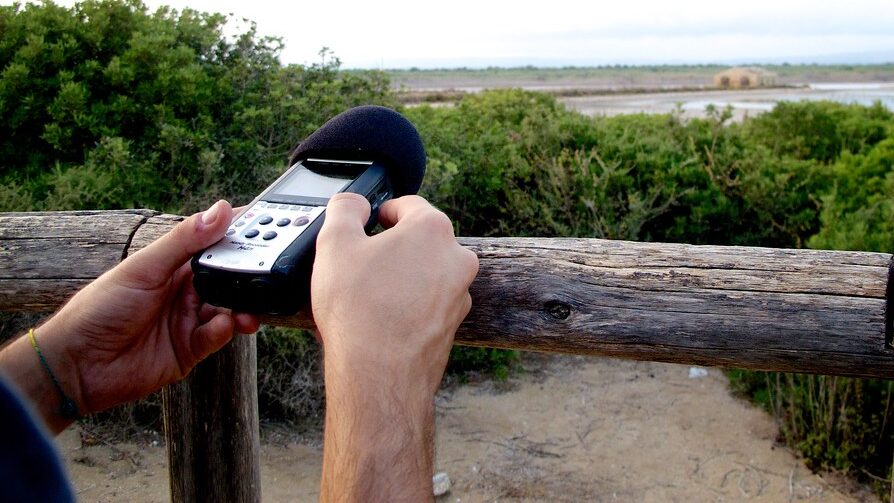
As traditional photography continues to prove challenging, researchers have expanded their documentation approach to include complementary methods that may eventually assist photographic efforts. Bioacoustic monitoring has proven particularly valuable, with recordings of male courtship calls providing insights into population distribution and density across regions where visual confirmation remains impossible. Environmental DNA (eDNA) sampling from soil and water sources in potential Tragopan habitat can now confirm recent presence of the birds without requiring visual contact. Some researchers have employed detailed field sketching techniques, partnering artists with ornithologists to create scientifically accurate representations of behaviors glimpsed too briefly for photography. While these methods don’t replace the need for photographic documentation, they provide valuable contextual information that may eventually help photographers anticipate Tragopan behavior and increase their chances of success in this ongoing wildlife documentation challenge.
Conclusion
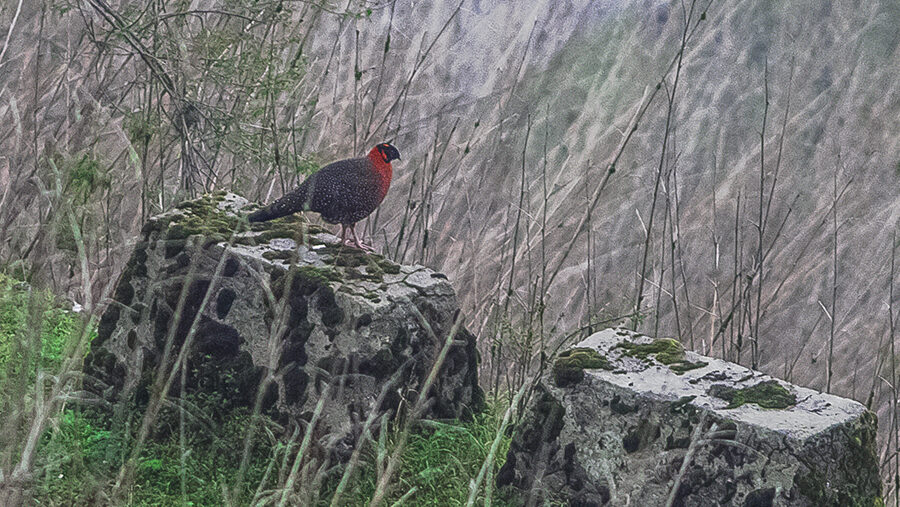
The Satyr Tragopan remains one of wildlife photography’s greatest challenges, a bird that continues to elude comprehensive documentation despite decades of dedicated effort. This ongoing photographic quest represents more than scientific curiosity—it embodies the tension between modern documentation technology and the extraordinary adaptations that allow certain species to maintain their privacy even in our camera-filled world. As climate change and habitat loss increasingly threaten Himalayan ecosystems, the race to document this magnificent bird grows more urgent. Whether through technological innovation, indigenous partnerships, or sheer perseverance, the eventual successful documentation of the Satyr Tragopan’s full natural behaviors would represent not just a photography milestone but an important conservation achievement. Until then, this crimson phantom of the Himalayas remains nature’s reminder that some of her most spectacular wonders still escape our lenses, waiting to be revealed to those with enough patience and respect to earn the privilege.
